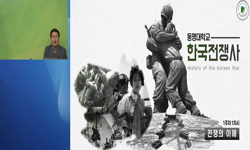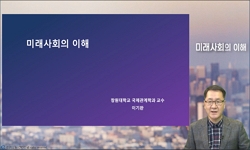The Korean War was the first clash between democratic and communist forces after the end of World War II. In the course of the war, the U.S. changed its goal from the restoration of the pre-war condition to the unification of Korea to the restoration ...
http://chineseinput.net/에서 pinyin(병음)방식으로 중국어를 변환할 수 있습니다.
변환된 중국어를 복사하여 사용하시면 됩니다.
- 中文 을 입력하시려면 zhongwen을 입력하시고 space를누르시면됩니다.
- 北京 을 입력하시려면 beijing을 입력하시고 space를 누르시면 됩니다.

6·25전쟁 당시 미국 전쟁지도부의 핵무기 인식과 핵정책 = The U.S. Leadership’s Perception and Policy of Nuclear Weapons during the Korean War
한글로보기부가정보
다국어 초록 (Multilingual Abstract)
changed its goal from the restoration of the pre-war condition to the unification of Korea to the restoration of the pre-war position and ceasefire.
In the process, the U.S. military considered the use of nuclear weapons several times. At that time, the U.S. had an overwhelming number of nuclear weapons compared to the Soviet Union, and also had a war plan that contained the nuclear attack options.
But both Truman and Eisenhower saw nuclear weapons as a limited option that could only be used in the confrontation with the Soviet Union, and ruled out the use of nuclear weapons in limited war like the Korean War because of the fear of expansion. Due to the development of tactical nuclear weapons in 1952, Eisenhower became more favorable towards the use of nuclear weapons, but using nuclear weapons in Korea considered with the assumption of the Soviet Union’s intervention never occurred as the armistice was signed.
The Korean War was the first clash between democratic and communist forces after the end of World War II. In the course of the war, the U.S.
changed its goal from the restoration of the pre-war condition to the unification of Korea to the restoration of the pre-war position and ceasefire.
In the process, the U.S. military considered the use of nuclear weapons several times. At that time, the U.S. had an overwhelming number of nuclear weapons compared to the Soviet Union, and also had a war plan that contained the nuclear attack options.
But both Truman and Eisenhower saw nuclear weapons as a limited option that could only be used in the confrontation with the Soviet Union, and ruled out the use of nuclear weapons in limited war like the Korean War because of the fear of expansion. Due to the development of tactical nuclear weapons in 1952, Eisenhower became more favorable towards the use of nuclear weapons, but using nuclear weapons in Korea considered with the assumption of the Soviet Union’s intervention never occurred as the armistice was signed.
동일학술지(권/호) 다른 논문
-
6.25전쟁 시기 유엔민간원조사령부 (UNCACK)의 성과와 한미 간 마찰
- (재)한국군사문제연구원
- 양준석
- 2022
- KCI등재
-
1950년대 후반 원자전에 대비한 한국군 전쟁 수행방안 연구
- (재)한국군사문제연구원
- 김영환
- 2022
- KCI등재
-
군사전략과 정치전략의 관점에서 본 냉전초 미국의 대한반도 전략
- (재)한국군사문제연구원
- 유나영
- 2022
- KCI등재
-
코로나 19(COVID-19)가 인간안보에 주는 함의와 한국 국방의 실천적 유용성 고찰
- (재)한국군사문제연구원
- 배일수
- 2022
- KCI등재




 DBpia
DBpia





